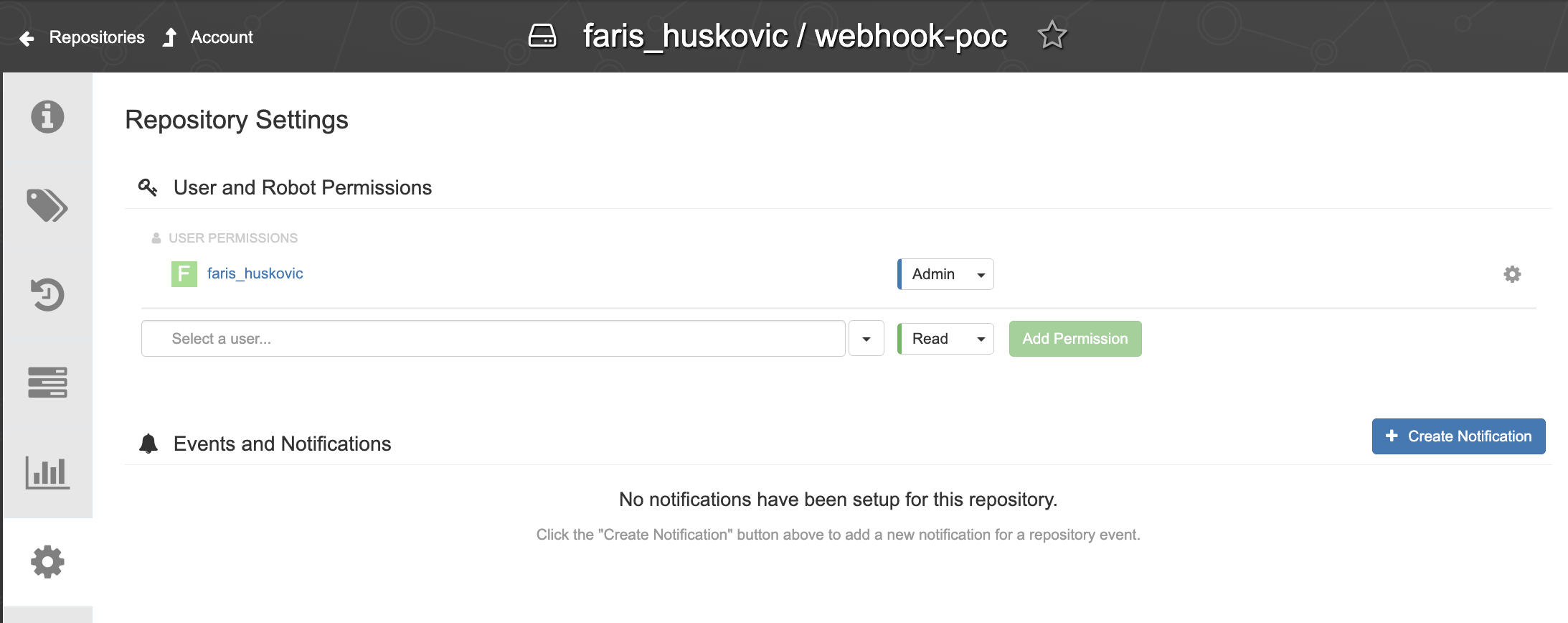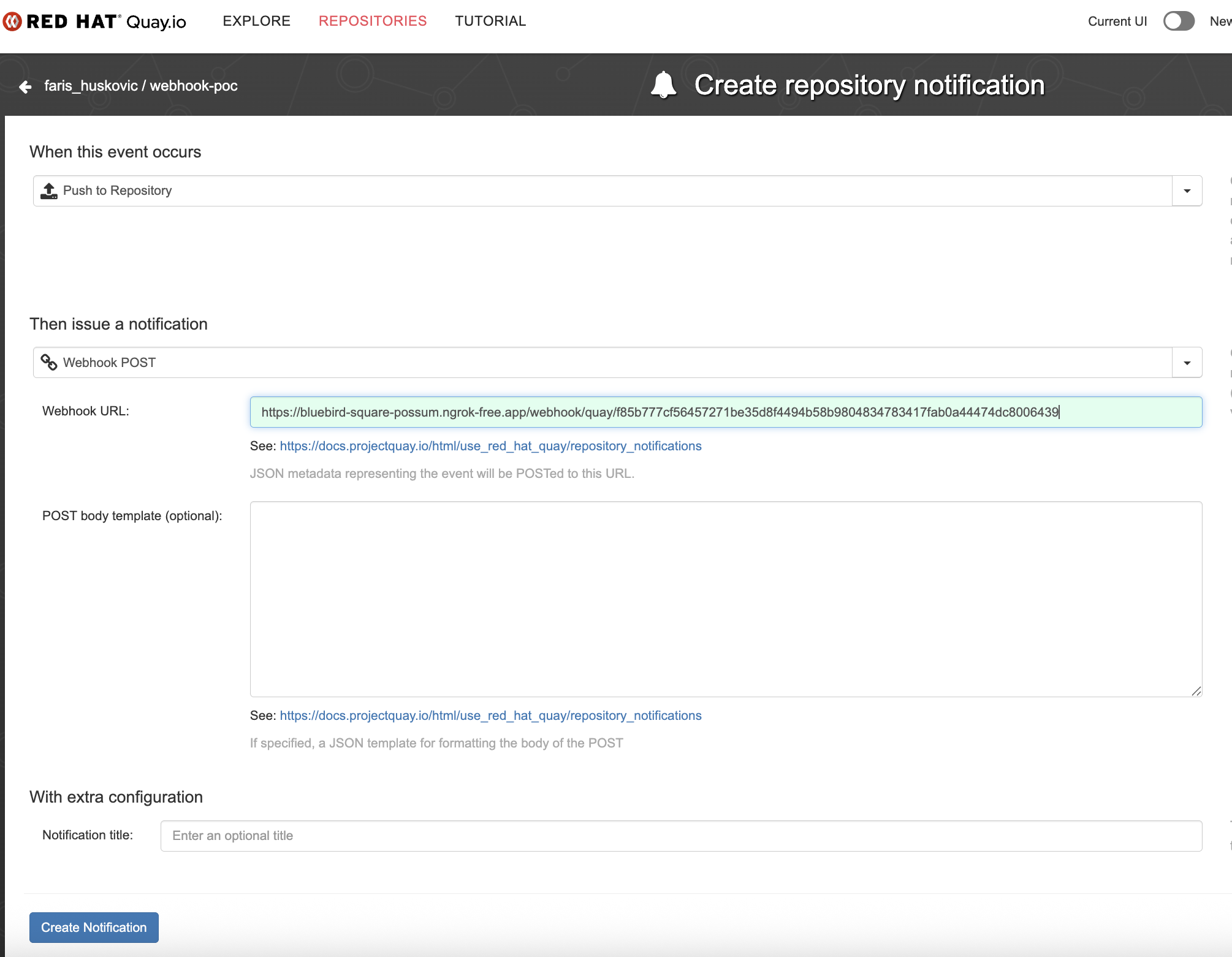Quay.io Webhook Receiver
The Quay.io webhook receiver responds to "Push to Repository" events originating
from Quay.io repositories by "refreshing" all Warehouse resources subscribed
to those repositories.
"Refreshing" a Warehouse resource means enqueuing it for immediate
reconciliation by the Kargo controller, which will execute the discovery of new
artifacts from all repositories to which that Warehouse subscribes.
Configuring the Receiver
A Quay.io webhook receiver must reference a Kubernetes Secret resource with a
secret key in its data map.
This secret will not be shared directly with Quay.io.
Quay.io does not natively implement any mechanism whereby receivers may authenticate inbound webhook requests. To compensate for this, Kargo incorporates the secret into the generation of a hard-to-guess URL for the receiver. This URL serves as a de facto shared secret and authentication mechanism.
The following commands are suggested for generating and base64-encoding a complex secret:
secret=$(openssl rand -base64 48 | tr -d '=+/' | head -c 32)
echo "Secret: $secret"
echo "Encoded secret: $(echo -n $secret | base64)"
apiVersion: v1
kind: Secret
metadata:
name: q-wh-secret
namespace: kargo-demo
labels:
kargo.akuity.io/cred-type: generic
data:
secret: <base64-encoded secret>
---
apiVersion: kargo.akuity.io/v1alpha1
kind: ProjectConfig
metadata:
name: kargo-demo
namespace: kargo-demo
spec:
webhookReceivers:
- name: q-wh-receiver
quay:
secretRef:
name: q-wh-secret
Retrieving the Receiver's URL
Kargo will generate a hard-to-guess URL from the receiver's configuration. This URL can be obtained using a command such as the following:
kubectl get projectconfigs kargo-demo \
-n kargo-demo \
-o=jsonpath='{.status.webhookReceivers}'
Registering with Quay.io
To configure a single Quay.io repository to notify a receiver when objects (like container images or Helm charts) have been pushed to it:
-
Navigate to
https://quay.io/repository/<account>/<repository>?tab=settings, where<account>has been replaced with a Quay.io username or organization name and<repository>has been replaced with the name of a repository belonging to that account and for which you are an administrator.
-
In the Events and Notifications section, click Create Notification.
-
Complete the Create repository notification form.

-
In the When this event occurs dropdown, select Push to Repository.
-
In the Then issue a notification dropdown, select Webhook POST.
-
Complete the Webhook URL field using the URL for the webhook receiver.
-
Click Create Notification.

-
Verifying delivery of webhook requests can be difficult as Quay.io offers a mechanism for submitting test webhook requests, but offers no way to view the results of such a request.
For additional information on configuring Quay.io webhooks, refer directly to the Quay.io Docs.